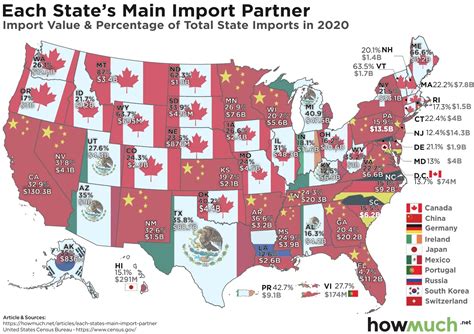Greenland Vs United States Size

The comparison between Greenland and the United States in terms of size is a fascinating one, highlighting the vast differences in territorial extent between these two entities. Greenland, an autonomous territory within the Kingdom of Denmark, is the world's largest island, with a total area of approximately 2,166,086 square kilometers (836,330 square miles). On the other hand, the United States, one of the largest countries globally, covers about 9,833,517 square kilometers (3,805,927 square miles), making it significantly larger than Greenland.
Despite the considerable size difference, with the United States being roughly 4.5 times larger than Greenland, it's interesting to note the unique characteristics of each. Greenland's massive size is largely composed of ice, with about 80% of its land area covered by the Greenland Ice Sheet, which is the second-largest ice body in the world after Antarctica. This ice sheet is not only a significant feature of Greenland's geography but also plays a critical role in the global climate system. In contrast, the United States is a vast and diverse country, comprising a wide range of landscapes, from the coastal plains of the Atlantic and Pacific Oceans to the mountain ranges of the Rockies and the Appalachian Mountains, and including vast deserts like the Mojave and the Sonoran Desert.
Key Points
- Greenland is the world's largest island, with an area of approximately 2,166,086 square kilometers.
- The United States is roughly 4.5 times larger than Greenland, covering about 9,833,517 square kilometers.
- Greenland's size is largely composed of ice, with the Greenland Ice Sheet covering about 80% of its land area.
- The United States features a diverse geography, including coastal plains, mountain ranges, and deserts.
- The size comparison highlights the significant territorial differences between Greenland and the United States.
Geographical Comparison

From a geographical standpoint, both Greenland and the United States exhibit unique features that set them apart. Greenland’s geography is predominantly characterized by its ice sheet, which not only contributes to its size but also influences its climate and ecosystem. The ice sheet is so massive that if it were to melt completely, it would raise global sea levels by about 7 meters (23 feet). In contrast, the geographical diversity of the United States encompasses a broad spectrum of ecosystems, including forests, grasslands, wetlands, and coral reefs, supporting a wide variety of flora and fauna.
Ecological Impact
The ecological impact of these geographical features is significant. Greenland’s ice sheet, for instance, reflects a substantial amount of sunlight back into space, contributing to the Earth’s albedo (reflectivity), and thus playing a role in regulating global climate patterns. Meanwhile, the diverse ecosystems within the United States support a vast array of biodiversity, from the iconic species of the American West, such as grizzly bears and bison, to the unique wildlife of the Everglades in Florida, including alligators and manatees. The preservation and management of these ecosystems are crucial for maintaining ecological balance and supporting life on Earth.
| Entity | Area (km²) | Percentage of Global Land Area |
|---|---|---|
| Greenland | 2,166,086 | Approx. 1.5% |
| United States | 9,833,517 | Approx. 6.6% |

Climatic Considerations

Climatically, both Greenland and the United States are subject to a range of conditions, influenced by their geographical characteristics. Greenland’s climate is generally cold, with the ice sheet exerting a significant cooling effect on the surrounding environment. The country experiences almost 24 hours of daylight in the summer and complete darkness in the winter due to its location near the Arctic Circle, a phenomenon known as the Midnight Sun and Polar Night, respectively. In contrast, the United States spans a considerable latitudinal range, resulting in a diverse climate that varies from the tropical conditions of Hawaii and southern Florida to the polar climate of Alaska. This diversity in climate supports a wide range of agricultural activities, from the corn and soybean fields of the Midwest to the citrus groves of California and Florida.
Agricultural and Economic Implications
The size and geographical features of Greenland and the United States have significant implications for their economies, particularly in terms of agriculture and natural resource management. Greenland’s economy is largely based on fishing and tourism, with the ice sheet and surrounding waters providing unique opportunities for scientific research and adventure travel. The United States, with its vast and diverse landscapes, has a more complex economy that includes significant contributions from agriculture, manufacturing, services, and technology. The agricultural sector, for example, benefits from the varied climates and soils found across the country, allowing for the production of a wide range of crops and livestock products.
What is the primary geographical feature of Greenland?
+The primary geographical feature of Greenland is its ice sheet, which covers about 80% of the island and is the second-largest ice body in the world.
How does the size of Greenland compare to the United States?
+The United States is roughly 4.5 times larger than Greenland, with the U.S. covering about 9,833,517 square kilometers compared to Greenland's 2,166,086 square kilometers.
What are the ecological implications of Greenland's ice sheet and the geographical diversity of the United States?
+Greenland's ice sheet plays a significant role in global climate regulation, while the geographical diversity of the United States supports a wide range of ecosystems and biodiversity, contributing to ecological balance and life on Earth.
In conclusion, the comparison between Greenland and the United States in terms of size highlights not only their territorial differences but also the unique geographical, ecological, and climatic characteristics of each. Understanding these aspects is essential for appreciating the complexity of our planet and the varied roles that different regions play in the global system. As we move forward in an era marked by environmental challenges and the need for sustainable development, recognizing the importance of preserving the natural features and ecosystems of both Greenland and the United States becomes increasingly critical.



